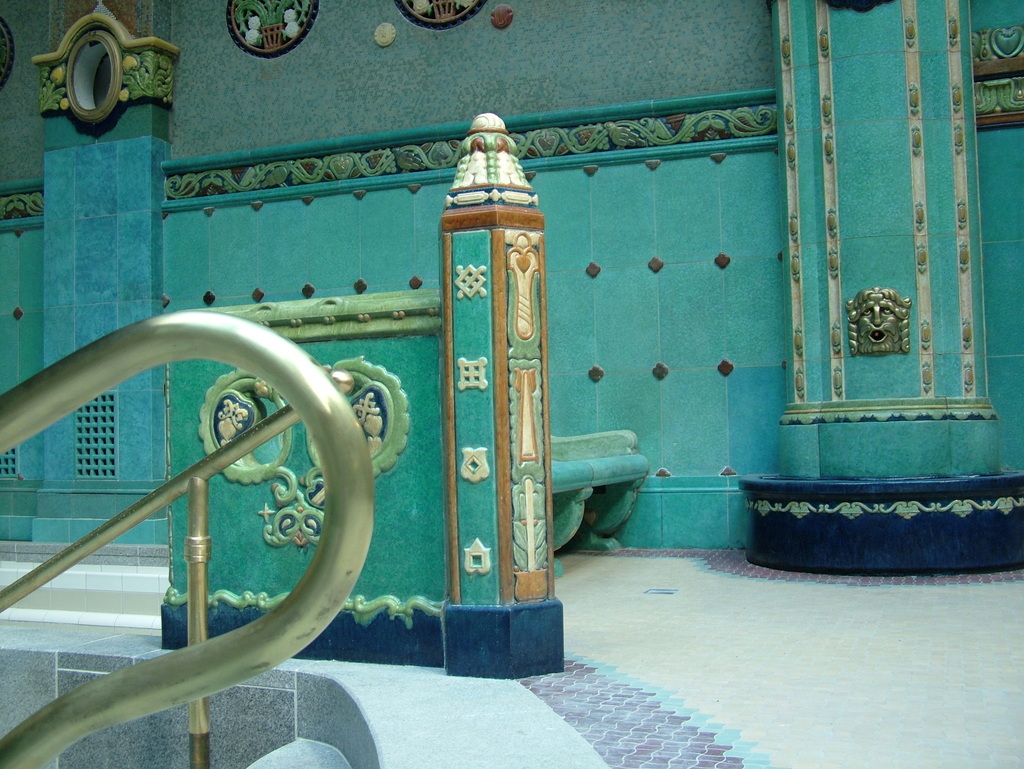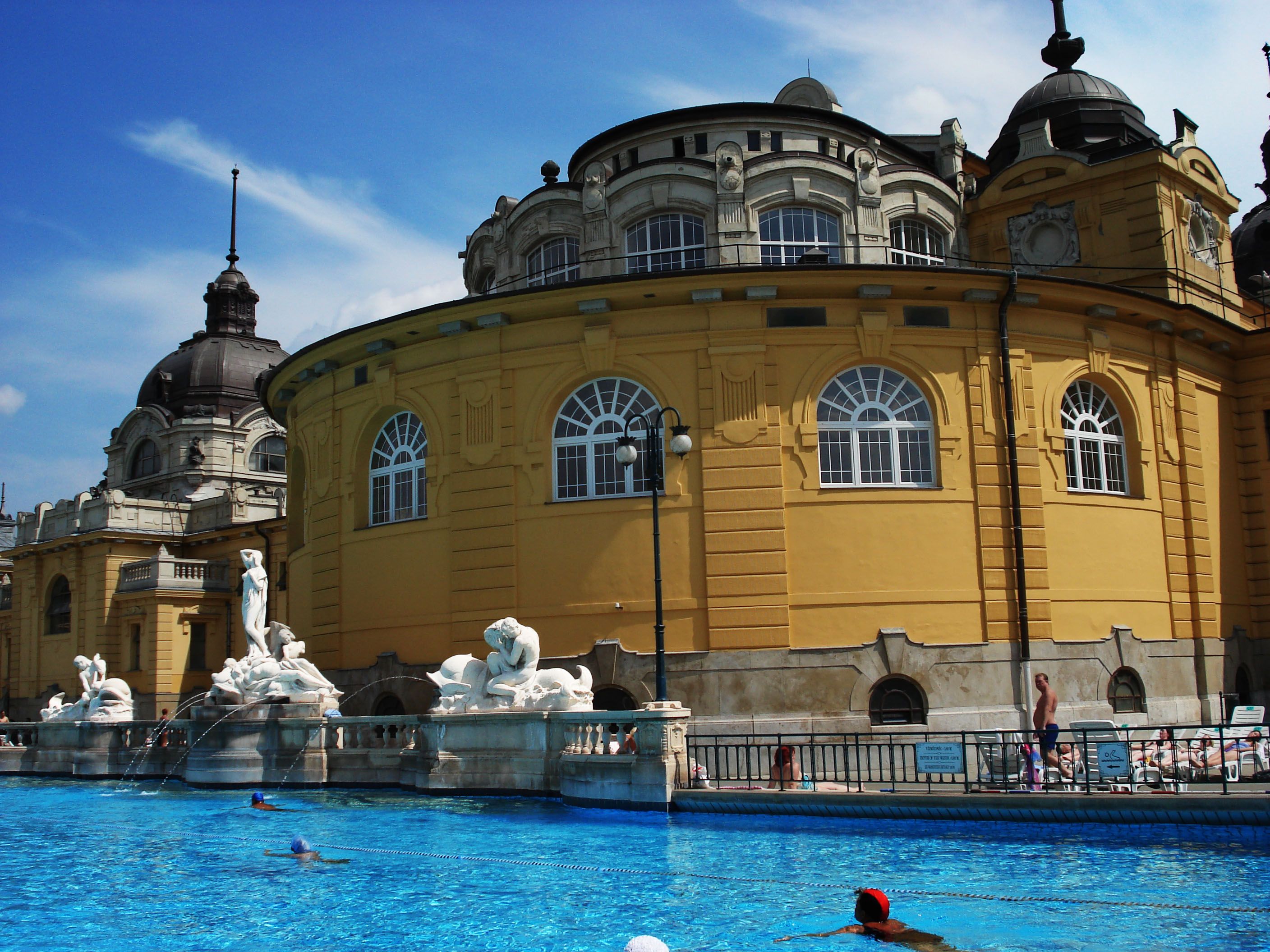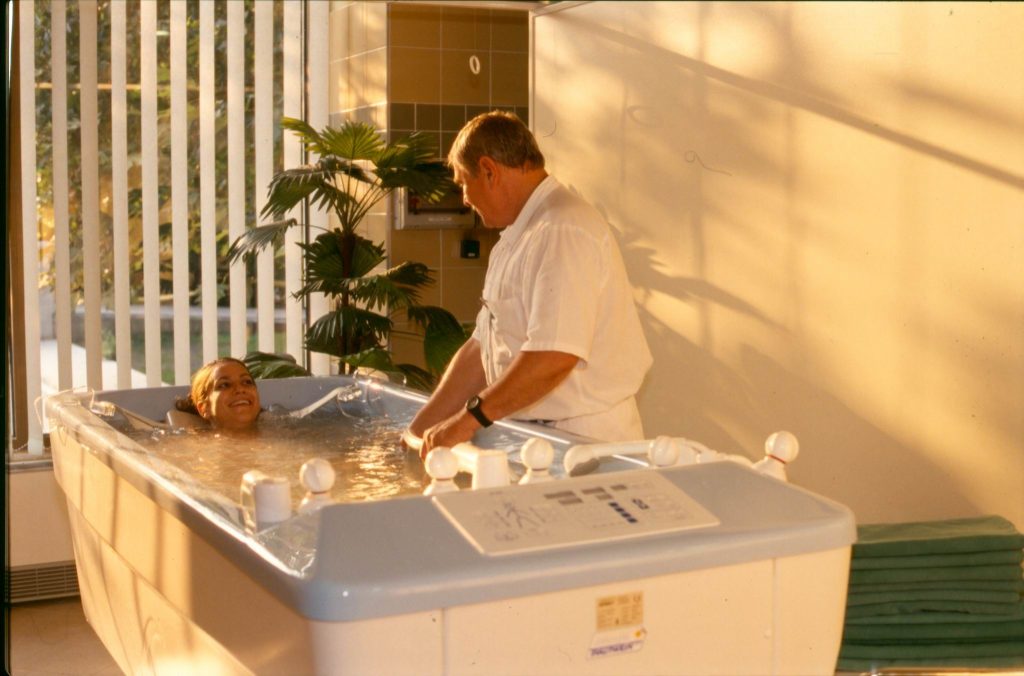

If you see an offer from Danubius that does not reflect the stated discount, or a couponcode does not work, please let us know and we will correct it as soon as possible.
| Discount | Description | Expiry Date |
|---|---|---|
| 15% | Up to 15% discount Danubius Hotels | 2025-10-11 |
| 20% | Supersaver Wellness Stay Package with up to 20% off - Danubius Hotel Buk | 2025-06-05 |
| 10% | Hotel Deal: Up to 10% off on Your Next Stay | 2025-04-08 |
The thermal bath is a series of indoor thermal pools where temperatures range from warm to hot, steam rooms, saunas, ice-cold plunge pools and rooms for massage.
Water is the source and the cradle of life – the most essential of elements. Beyond drinking it, we can bathe, splash, and swim in it, and thus take advantage of its beneficial effects on body and spirit. Thermal water, medicinal water, hydrotherapy, balneotherapy, and hydropinic therapy are all words that crop up frequently in modern parlance. But what do we know of the roots of spa culture? How much of it is still with us today? And why is Budapest considered the City of Baths? Let us show you the Best Thermal Baths in Budapest!
The custom of bathing was already widespread among cultures of a certain level of development during ancient times, while in places like Babylon, Assyria, Persia, and the Indus Valley, baths also played an important role in religious ritual. Regular, purposeful bathing – what might be called “bathing culture” – first grew out of Eastern ritual hygienic practices during the times of the Greeks and – to an even greater extent – Romans, who were additionally acquainted with the waters’ power to treat certain illnesses. It was also the Romans who constructed the first large-scale public bath houses, which, headed by doctors, were where much of Roman public life was conducted. Large numbers of baths were located not only in Rome, but also in other cities of the Empire. In fact, the Romans generally built their cities over hot springs, such as those at Aquincum, the capital of Pannonia, which now lies within the Budapest municipal limits.


The choice of sites was no accident: Hungary’s special balneological features make it extraordinarily rich in mineral and medicinal waters. In fact, it is the fifth richest country in the world, after Japan, Iceland, Italy, and France, in sources of thermal water. In Japan and Iceland, spa waters are extremely warm, but low in mineral content, while in Italy and France, it is the other way around, they are high in mineral content but water temperatures fail to even approach to those enjoyed in the Carpathian Basin. Hungarian thermal waters are simultaneously high in temperature and mineral content, making the country’s thermal resources unique in the world. In no other region does one find high-quality thermal and medicinal waters that can treat or prevent so many different illnesses.
The country boasts approximately 150 warm-water medicinal thermal baths, 36 of them containing special substances (radioactive components, sulphurous acid, salts, bromine, carbonates, or iodine), including 19 official sources in Budapest, a city below which one finds both caves and, erupting from them, hot springs.
Bathing culture was first introduced in Budapest by the Romans. Archaeological excavations in Aquincum have unearthed nearly 20 private and public baths, including elements typical of both cold- and hot-water pools. Written sources show that bathing culture continued to flourish in the Middle Ages during the time of King Matthias, when bath houses, frequented the king himself, were dubbed “royal baths,” and even peasants and viticulturalists enjoyed regular use of the warm waters that collected in the holes around springs. These baths gained renewed popularity during the 150-year period of Ottoman Occupation, when the bath houses were among the most renowned and valued buildings in Buda. The Turks, who distinguished between natural thermal baths and what are known as steam baths (constructed using man-made heating systems), founded eight new bath houses in Buda along the right bank of the Danube. Of these, the Rudas on the Danube bank (formerly known as the Green-Columned Bath), the Rác (the “little bath”), the Király-fürdő (or Royal Bath, constructed by Mustafa Sokollu in the second half of the 16th century), and the Császár-fürdő (formerly the Veli Bej Bath, also constructed by Mustafa Sokollu and once the most elegant of all the bath houses in Buda) are still in operation today. With the end of the Ottoman Occupation, the high age of bathing culture faded and the condition of the baths themselves fell into decline. The third great flourishing of the Buda bath houses arrived with the Enlightenment, when the facilities drew appreciation for both their hygienic and recreational uses, though their therapeutic potential had also come to light. The year 1812 was the first for which information on the healing properties of thermal springs – data used to draft the country’s first hydrography – was gathered. In the second half of the 19th century, Budapest again experienced a resurgence in bathing culture, one that brought with it the drilling of new wells, the construction of new bath houses and the renovation of existing ones, the foundation of societies and associations for the popularisation of medicinal waters, and the development and promulgation of the practice on a larger scale.


It is common knowledge that immersion in water makes one feel lighter and allows the limbs to move more freely. This is particularly noticeable to those with damaged, worn, or diseased joints. As one moves, the water exerts a soothing, massaging effect. If the water is tepid or even pleasantly warm, it causes tightened muscles to relax and arteries to expand, improving circulation. Beyond these physical effects, thermal and medicinal waters also exert various chemical effects due to the dissolved mineral substances they contain. These mineral salts are absorbed through the skin to enter the blood circulation, which carries them to within proximity of every cell in the body. Once there, they strengthen the immune system, replenish substances that are essential to healthy muscles and joints, benefit the body’s ability to react, and promote various self-healing processes.
One of the most important physical properties of medicinal waters is temperature. Tepid baths of 21-31°C act to calm the nervous system, while warmer waters of temperatures ranging from 32 to 37°C prompt the blood vessels in the skin to expand, increasing cardiac and respiratory rates. In medicinal baths, this heat expands the pores in the skin as well, allowing the mineral substances in the water to enter the bloodstream, where they strengthen the immune system, promote lymphatic circulation, and in this way, initiate healing processes in the body. The warm water helps release painfully cramped muscles, alleviate joint aches, and speed the excretion of wastes.
The warmest thermal bath in Budapest is found at the Rudas (42°C). Of pools intended for swimming, the coldest is the outdoor men’s pool at the Lukács (22°C), and the warmest, featuring medicinal waters of 29°C, is the Rudas’ indoor medicinal pool.
Subscribe to the newsletter
Weekly receive your most popular coupon codes by e-mail. Do not miss any coupons from your favorite stores and many top brands. Receive the latest coupon codes only for you!
Each month, our website is trusted by shoppers looking for the best deals across hundreds of stores. We're committed to transparency and have been helping shoppers save for years.
Our team of experts, supported by AI, adds fresh codes daily and avoids misleading "deals" to ensure authentic savings.
Pages are updated with the latest offers and shopper feedback. Learn more about us here.
Danubius Hotel Rába is located in Győr's Baroque city centre and welcomes visitors looking for rest and relaxation. The hotel serves as a great base for discovering the city or for leisure activities. The vibrant cultural life of the city and its historic monuments are famously located at the confluence of four rivers, which is why it's also called the “River City”. Győr lies on the Vienna-Bratislava-Budapest axis of innovation, and has excellent transportation facilities. For the reconstruction of its Baroque city centre, the city was awarded the European Union Prize for Cultural Heritage. Visit the Zichy Palace, the magnificent Győr Basilica, the Bishop's Castle, Bishop's Palace and their on-site attractions, and Chapter Hill. But during your sightseeing tour you should also have some pleasant cultural and gastronomic experiences. For instance, it would be a pity to miss the special beer that's served up at the Belgian Pub and Restaurant. Sample some Trappist and Abbey fruit-flavoured, wheat, dark and light brown beers that have been brewed by masters and prepared according to centuries-old traditions.
| Discount Codes | 12 |
| Best Danubius Coupon | 20% |
| Working Coupon Codes | 0 |
| Redeemed Codes | 5 |